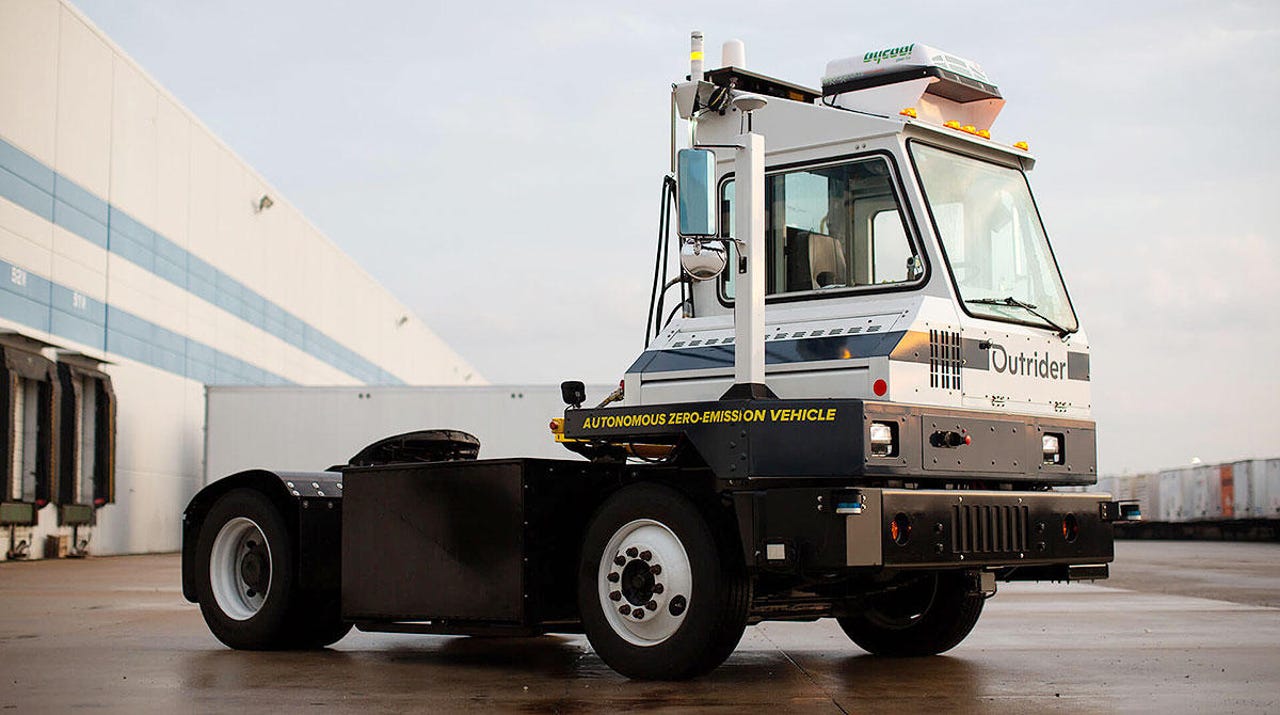Yard work: Automation strolls out the warehouse door


Logistics and fulfillment centers have adopted automation at a blistering pace since Amazon acquired Kiva back in 2012. The inside of a modern fulfillment warehouse looks like a carefully orchestrated dance between human workers and a number of robots, including autonomous mobile carts and pick-and-place machines.
But the distribution yards outside logistics warehouses have been run largely the same way -- by humans -- for years. That's about to change as logistics robots head outside.
A company called Outrider, which launched in 2017 and has been operating in stealth, recently closed $53 million in funding and deployed initial pilots of its Outrider System, a solution focused on autonomous yard operations for logistics hubs.
Think Tetris. Strategically, that's a bit what it's like constantly keeping semi-trailers coming and going with freight. The space between the warehouse doors and public roads, however, is a chokepoint at even the best-run logistics centers. Humans oversee the yard, and the processes are manual, inefficient, and often hazardous.
Robots can do better, or so argues Outrider.
"Logistics yards offer a confined, private-property environment and a set of discrete, repetitive tasks that make the ideal use case for autonomous technology. But today's yards are also complex, often chaotic settings, with lots of work that's performed manually," said Andrew Smith, founder and CEO of Outrider. "This is why an overarching systems approach – with an autonomous truck at its center – is key to automating every major operation in the yard."
Outrider's solution automates the repetitive, manual aspects of yard operations, including moving trailers around the yard, moving trailers to and from loading docks, hitching and unhitching trailers, connecting and disconnecting trailer brake lines, and monitoring trailer locations. At scale, Outrider will deliver yards that are more efficient, safer, and more sustainable.
"We're constantly looking for ways to transform our company and the way we get work done, especially making work safer and more efficient and productive," said Annant Patel, Vice President of Automation Transformation at Georgia-Pacific. "Yard operations has been one of our opportunities, and Outrider has been a great partner to help us automate our pilot site."
The automated system is made up of three components: Advanced yard management software, autonomous zero-emission yard trucks that feature vision-based robotics, and site infrastructure. The sales pitch is that the Outrider System integrates with existing supply chain software used by large enterprises. It's the same pitch that robotics companies like Fetch have made to warehouses. Companies can go live with automation without major retrofits and be online exceptionally quickly.
"Modern distribution yards won't be just autonomous, they'll be electric," continued Smith. "Electric yard trucks are easier to operate and maintain than their diesel counterparts, and they lend themselves to better computer control. Our mission is to work with customers and suppliers to rapidly retire the more than 50,000 diesel-polluting yard trucks currently operating at logistics hubs throughout the U.S."
Outrider has been active helping define the next-generation standard for Level 4 Autonomy System Design.
"Outrider is introducing the transformational technology required for large, logistics-dependent enterprises to keep pace," said Jake Medwell, Founding Partner at 8VC. "We consider hundreds of investment opportunities in the logistics space every year. Our decision to be an early investor in Outrider was an easy one. Andrew's vision and plan for the industry are highly compelling, and he's mobilized an unmatched team to execute."
The company is based in Golden, Colorado.